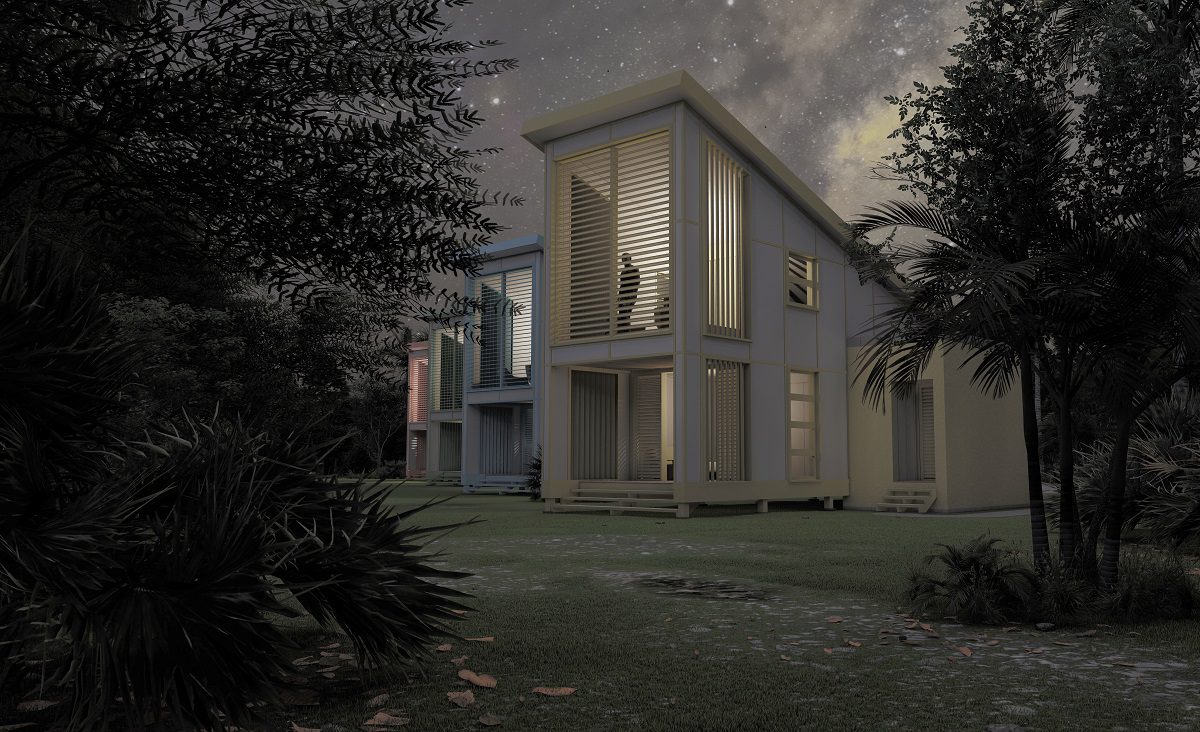UNC Charlotte Students Join Students from Florida and The Bahamas to Design Post-Hurricane Housing
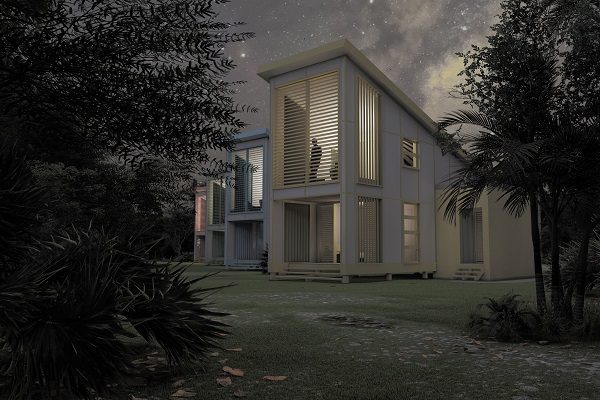
As North America prepares for another hurricane season, the work of one School of Architecture studio is responding to the challenge. Begun in the Fall 2020 semester and entering a second phase in Fall 2021, a collaboration with the University of the Bahamas (UB) and Florida A&M (FAMU) University has brought students from all three institutions together to design innovative and sustainable housing prototypes that can serve as emergency shelters after a natural disaster.
The collaborative design studio is working in partnership with One Eleuthera Foundation, a non-profit community development organization on the island of Eleuthera, and the artist-driven interdisciplinary Michael Singer Studio. A $50,000 grant from the Jeffrey Cook Charitable Trust is funding the multi-semester project, with an additional $15,000 in materials and tools from Lowes Home Improvement.
Last fall, 10 UNC Charlotte architecture students, 15 students from UB’s Department of Architecture & Technology and Department of Visual Arts & Design, and four research students from FAMU’s School of Architecture and Engineering Technology met weekly via Zoom to develop their designs for off-the-grid, easily built housing. Large-group lectures and presentations were followed by break-out sessions in which five small teams of students devised different approaches to solving the design challenge.
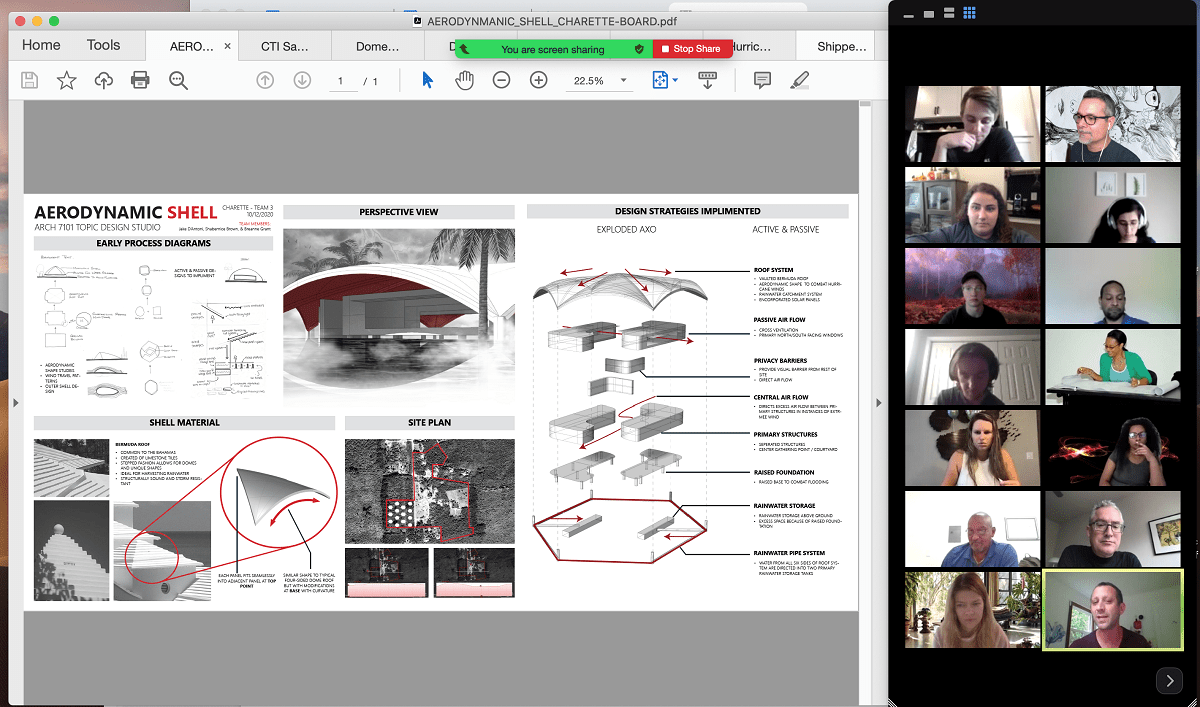
Students conducted research, brainstormed different strategies, held design charrettes, and finally created five different prototypes, said Professor of Architecture and Associate Dean for Research and Graduate Programs José Gámez, who led the UNC Charlotte students. One model, for example, was an 8 ft. by 8 ft. cabin made of shipping pallets. Another was “a modern-day thatched hut up on stilts, like you’d see on a beach at a Disney resort,” said Gámez.
One Eleuthera Foundation hopes the structures will serve a dual purpose – as temporary solutions to post-hurricane destruction but also short-term shelters for eco-tourism vacation rentals to enhance the local economy of South Eleuthera. While tourism has made The Bahamas the third richest country in the Americas, one fourth of the population lives in poverty. The students’ designs could increase access to home ownership and tourism income for those Bahamians.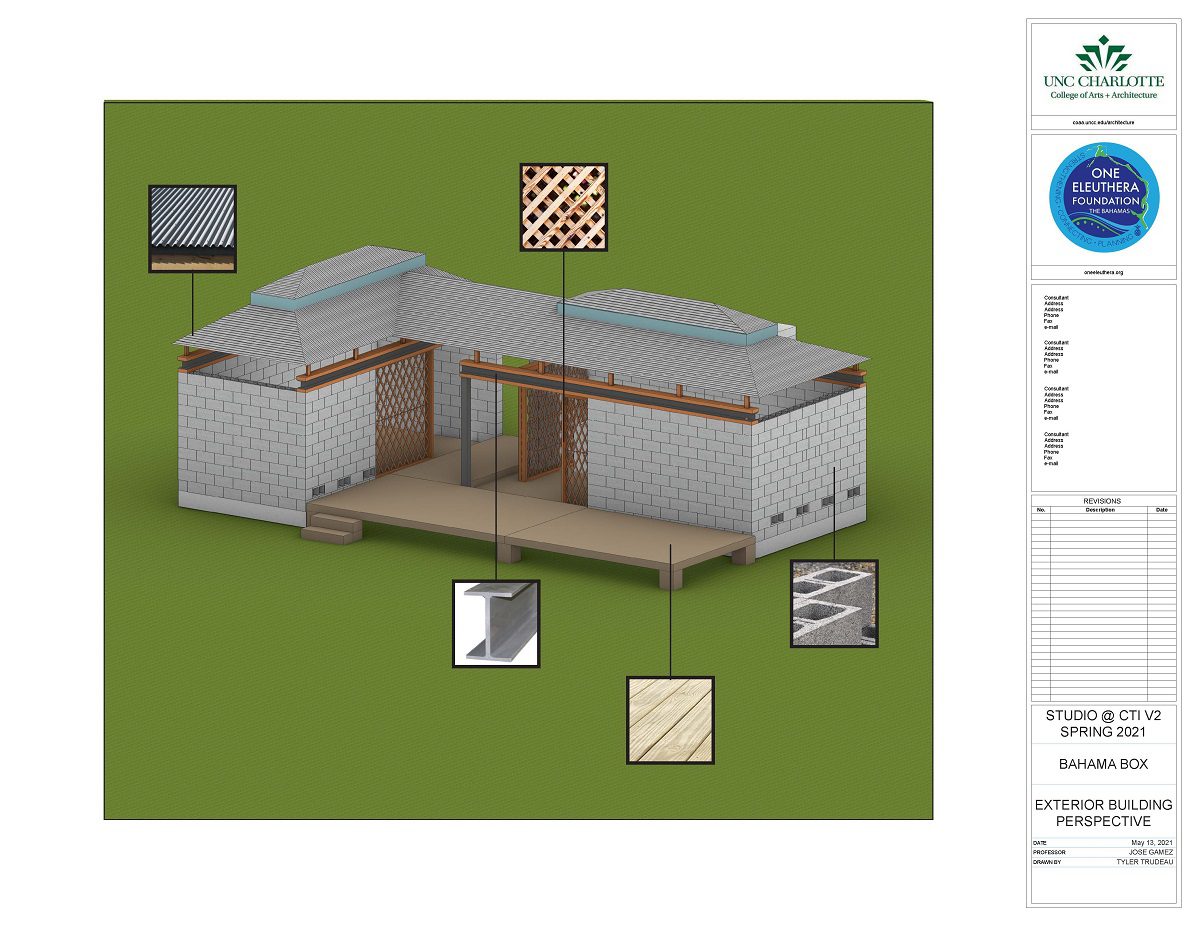 “Bahama Box,” a collaborative design rendering developed by UNC Charlotte student Tyler Trudeau.
“Bahama Box,” a collaborative design rendering developed by UNC Charlotte student Tyler Trudeau.
As the class opens in Fall 2021, the new collaborative cohort of students will continue to work with the One Eleuthera Foundation to develop housing solutions for the residents of South Eleuthera. Students may even be able to travel to the Bahamas next spring or summer to help build some houses. Additionally, Gámez said, a long-term goal is to adapt emergency housing designs for use along Florida and North Carolina coastlines, which are also vulnerable to destructive winds and flooding.
“What I really enjoyed was seeing the students of these three universities interact with one another and work together – so the idea of international partnerships involving collaborations between students,” said Brook Muller, dean of the College of Arts + Architecture, who joined the Zoom studio on several occasions. “Peer-to-peer learning is where it really starts to happen, and when you’re having those experiences with people from very different places and cultures, the learning ramps up dramatically.”
Student Summer Anderson, who participated in the Fall 2020 studio and continued to work on the project in an independent study last spring, said that this project has been her favorite of her architectural education. Designing for extreme weather – choosing building materials that were compatible with hurricane conditions, had low environmental impact, and could be easily acquired by island residents – presented the biggest learning curve, she said. “It was a unique experience working with people from another culture, as well.”
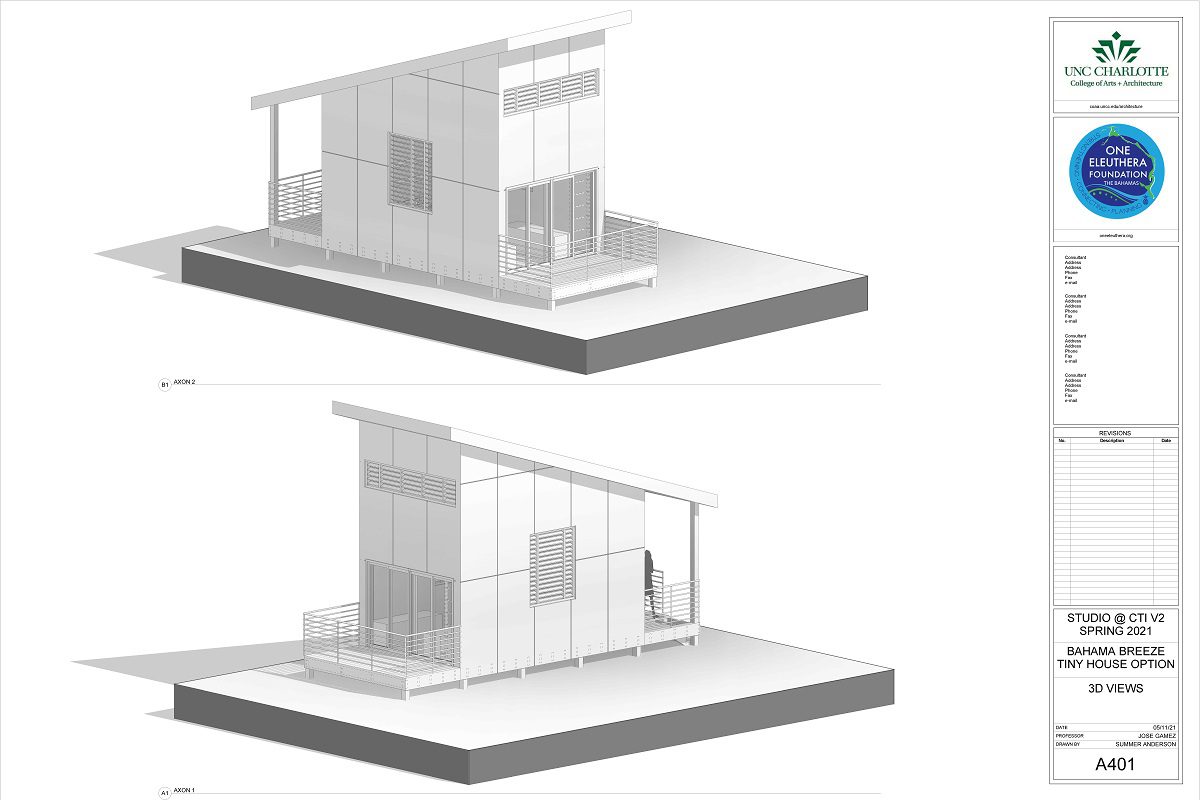 Summer Anderson’s “Tiny House” version of a design called “Bahama Breeze,” seen at top and below in its full-size rendering by Ryan Tillotson.
Summer Anderson’s “Tiny House” version of a design called “Bahama Breeze,” seen at top and below in its full-size rendering by Ryan Tillotson.
But the best part, she added, was that the project “will be brought to life and be used by people who actually need it, and that is why I got into architecture in the first place. To me designing something that is practical and can be used in emergencies is, honestly, more significant than designing something beautiful. Using architecture and design for helping people is beautiful to me.”
